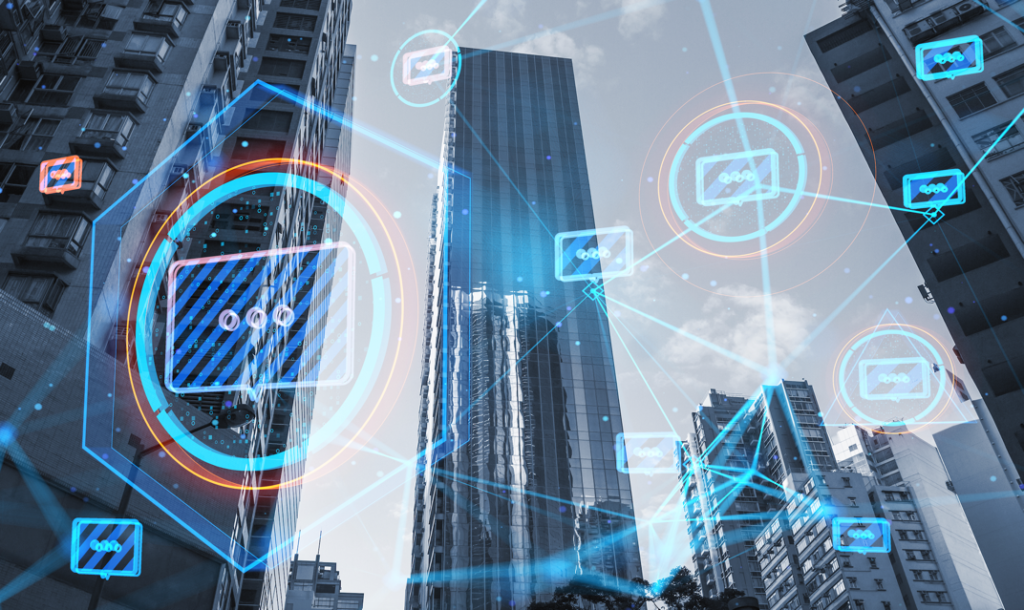What is an intelligent building?
First, we define a smart building as a structure equipped with innovative materials and technologies that allow all its systems to be automated and self-regulated. Using technologies such as IoT (Internet of Things), a smart building seeks to improve the usability of the structure, optimize its efficiency and increase its safety and accessibility. All this while also making the building more sustainable and environmentally conscious.

Features
1. Connected Systems:
Many buildings already have smart technology in their facilities to control specific areas of the structure. This does not mean that they can already be recognized as intelligent buildings. The next step to achieve this distinction is to ensure that all systems are integrated and that the software that processes the data is well implemented in order to maximize the efficiency of the building.
While a centralized system is not necessary to guarantee the functionality of all systems independently, having one makes it easier for building owners and their managers to have a single interface and dashboard to monitor, control and identify inefficiencies among all systems integrated into the platform.
2. Sensors everywhere:
Sensors are a very important element when it comes to making a building smart. They allow the integrated systems to collect the amount of information needed to maximize the efficiency of the building. Your managers will be able to make better decisions and allocate resources correctly.
3. Automation:
No part of the collected data is lost. A smart building is constantly collecting information that has to be analyzed by the systems in real time. This constant monitoring allows automatic adjustments to be made that can control and improve conditions throughout the building.
What is the purpose of a smart building?
It is no surprise that these advances are becoming more common in the building industry. To reduce the environmental impact that building energy consumption generates, many cities in the United States, for example, already require commercial building owners to disclose the sustainable performance of properties to their stakeholders. Including modern control systems and automation techniques, smart buildings can:
- Produce energy savings.
- Promote sustainability and protect the environment.
- Improve the health and safety of occupants.
- Improve the quality of life of those who coexist with the building.
Benefits
In addition to making buildings more energy efficient and self-regulating, these five benefits should also be considered when designing the scenario for a smart building:
- Reduced energy consumption and efficiency booster: With the integration of smart sensors at multiple locations in a building, the energy consumption of lights and temperature control systems can see a significant decrease, as they will only operate when needed. This maximizes building resource efficiency, eliminates thermostat battles in offices, and reduces both electric bills and building carbon emissions.
- Access to better insights and visualization with Big Data: These buildings collect vast amounts of data from throughout the building at all times. With this information, smart technologies identify trends and uncover opportunities for building optimization, allowing managers to make informed data-driven decisions regarding the structure.
- Predictive maintenance: A building’s systems can have invisible failures from time to time that can go unnoticed and cause a major defect in the future. Smart technologies in a building allow detection of these errors, detail why they occurred, and help prioritize which problems to fix first.
- Better use of space: Smart buildings are designed to make the experience of their inhabitants more pleasant and seamless. These spaces also consider how they can raise standards and meet health and safety regulations, all while maintaining their cost-effectiveness.
- Improved building value: A smart building increases its market value once all appropriate smart technologies are implemented.





